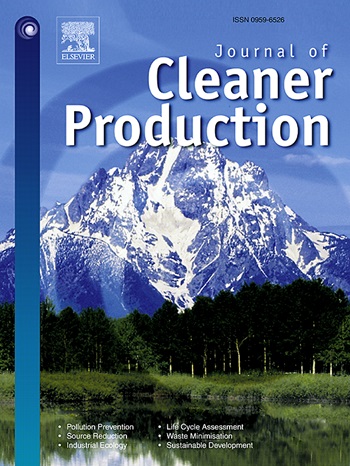Study on differential effects of supersonic separation technology in the decarbonization processes of two typical clean energy sources: Hydrogen and natural gas
IF 10
1区 环境科学与生态学
Q1 ENGINEERING, ENVIRONMENTAL
引用次数: 0
Abstract
This study investigates the differential effects of supersonic separation technology on decarbonization processes in hydrogen and natural gas systems by developing a multi-physics numerical model incorporating nucleation-droplet growth dynamics. Focusing on the thermodynamic-kinetic coupling mechanisms during CO2 non-equilibrium condensation, the research reveals how carrier gas properties (hydrogen and methane-dominated natural gas) govern phase transition efficiency under supersonic conditions. Key findings demonstrate that, due to hydrogen's high thermal conductivity and weak intermolecular interactions, hydrogen-rich systems are more prone to forming a large number of small-radius CO2 liquid droplets in supersonic nozzles compared to natural gas systems. When the inlet temperature is maintained at 270 K, during the process where the molar fraction of CO2 increased from 0.25 to 0.35, the liquid phase mass fraction of carbon dioxide in the natural gas system increased by 1.44 times, significantly higher than 1.21 times in the hydrogen-rich system. Under a constant CO2 concentration of 0.3, when the inlet gas temperature decreases from 275 K to 265 K, the growth rate of liquid-phase components in hydrogen-rich systems shows a 20.5 % reduction compared to natural gas systems. Natural gas systems leverage nucleation-density coarsening trade-offs for rapid efficiency gains, while hydrogen systems face diffusion-limited growth constraints. The work establishes a supersonic carbon capture framework rooted in phase-change dynamics, proposing specific strategies: cryogenic process intensification for natural gas decarbonization and supersonic-driven thermal balancing for hydrogen purification, to address nucleation suppression and mass transfer constraints inherent to supersonic separation systems, thereby enhancing CO2 condensation efficiency under non-equilibrium conditions.
超声速分离技术在氢和天然气两种典型清洁能源脱碳过程中的差异效应研究
本文通过建立包含成核液滴生长动力学的多物理场数值模型,研究了超音速分离技术对氢气和天然气系统脱碳过程的差异影响。重点研究了CO2非平衡冷凝过程的热力学-动力学耦合机制,揭示了载气性质(氢气和甲烷为主的天然气)对超声速条件下相变效率的影响。关键发现表明,由于氢气的高导热性和弱分子间相互作用,与天然气系统相比,富氢系统更容易在超音速喷嘴中形成大量小半径CO2液滴。当进口温度保持在270 K时,在CO2摩尔分数从0.25增加到0.35的过程中,天然气体系中二氧化碳液相质量分数增加了1.44倍,显著高于富氢体系的1.21倍。在CO2浓度为0.3的条件下,当进气温度从275 K降至265 K时,富氢体系中液相组分的生长率比天然气体系降低了20.5%。天然气系统利用核密度粗化权衡来快速提高效率,而氢气系统则面临扩散限制的增长限制。本研究建立了基于相变动力学的超音速碳捕集框架,提出了具体策略:天然气脱碳的低温过程强化和氢净化的超音速驱动热平衡,以解决超音速分离系统固有的成核抑制和传质约束,从而提高非平衡条件下的二氧化碳冷凝效率。
本文章由计算机程序翻译,如有差异,请以英文原文为准。
求助全文
约1分钟内获得全文
求助全文
来源期刊

Journal of Cleaner Production
环境科学-工程:环境
CiteScore
20.40
自引率
9.00%
发文量
4720
审稿时长
111 days
期刊介绍:
The Journal of Cleaner Production is an international, transdisciplinary journal that addresses and discusses theoretical and practical Cleaner Production, Environmental, and Sustainability issues. It aims to help societies become more sustainable by focusing on the concept of 'Cleaner Production', which aims at preventing waste production and increasing efficiencies in energy, water, resources, and human capital use. The journal serves as a platform for corporations, governments, education institutions, regions, and societies to engage in discussions and research related to Cleaner Production, environmental, and sustainability practices.
 求助内容:
求助内容: 应助结果提醒方式:
应助结果提醒方式:


